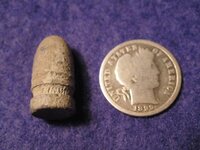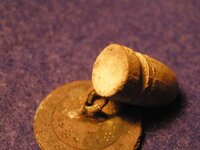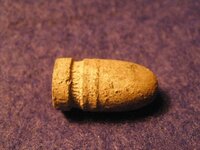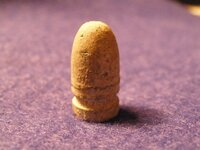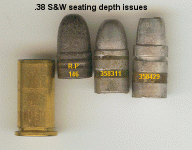boondocker
Full Member
I found this yesterday and was just wondering what era this might be from. It's dia. is .355", length is .690", it is fired and shows rifling on the lead, it has 2 upper rings above the indented groove and a concave base.  Hope my description of the bullet helps. Many thanks Dean
Hope my description of the bullet helps. Many thanks Dean
 Hope my description of the bullet helps. Many thanks Dean
Hope my description of the bullet helps. Many thanks Dean

